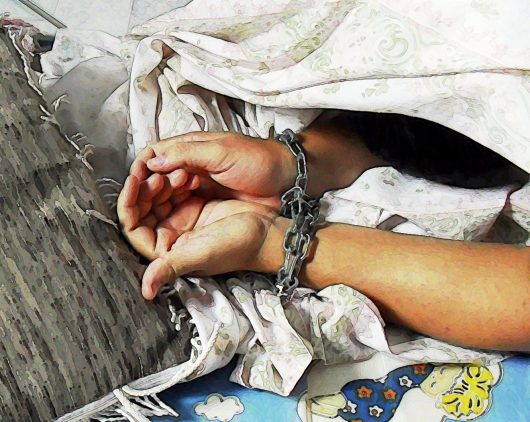Human Trafficking Facts and Info
 Human trafficking is a disturbing crisis that affects individuals of all ages, sexes and races at a global level. It is a crime that is often regarded as one of the most pressing human rights issues of our time. According to data from the National Human Trafficking Hotline, human trafficking in the United States rose 35.7 percent from 2015 to 2016.
Human trafficking is a disturbing crisis that affects individuals of all ages, sexes and races at a global level. It is a crime that is often regarded as one of the most pressing human rights issues of our time. According to data from the National Human Trafficking Hotline, human trafficking in the United States rose 35.7 percent from 2015 to 2016.
Human trafficking is essentially a form of modern-day slavery, where traffickers will use force, fraud or coercion to control victims. The two most common forms of human trafficking are sex trafficking and labor trafficking. Sex trafficking has been found in a multitude of venues within the sex industry, including residential brothels, escort services, fake massage businesses, strip clubs and street prostitution. Labor trafficking is found in a variety of labor settings such as domestic work, small businesses, large farms and factories.
Trafficking exists due to two major factors: low risk and high profits. Human traffickers tend to see little risk in these criminal operations. Although there have been increasing investigations, penalties and prosecutions throughout the years, the high profit potential from committing these crimes makes them worth the risk for many. There is often a lack of government and law enforcement training with these situations, as well as many in a community not being aware of the threat, ineffective laws, scarce resources to help victims recover and even social blaming of victims. Many of these high profits include when individuals are willing to buy commercial sex, whether it be from children or adults, and many consumers are willing to buy services from industries that rely on forced labor.
Top Facts on Human Trafficking:
- Globally, the average cost of a slave is $90.
- While 19 percent of trafficking involves labor exploitation, 80 percent of trafficking involves sexual exploitation.
- There are approximately 20 to 30 million slaves in the world today.
- About 600,000 to 800,000 people are trafficked across international borders every year, and 80 percent are female while half are children.
- Human trafficking is the third largest international crime industry—just behind illegal drugs and arms trafficking—and reportedly generates a profit of $32 billion every year. Of the $32 billion, $15.5 billion is made in industrialized nations.
- According to the International Labour Organization, it is estimated that women and girls represent the largest share of trafficking victims when it comes to forced labor with 11.4 million (55 percent), compared to men at 9.5 million (45 percent).
- According to the United Nations Office on Drugs and Crime, the greatest numbers of traffickers stem from Asia, Central Europe, Southeastern Europe and Western Europe.
The Department of Homeland Security has a page that can help one recognize the signs of human trafficking, as well as a page on further identifying a victim with hotlines to call to report suspicious criminal activity to the U.S. Immigration and Customs Enforcement (ICE). Being informed on human trafficking as well as the proper steps to take when potentially encountering a trafficking victim could save someone from an unfortunate and disturbing fate.
– Sara Venusti
Photo: Flickr
